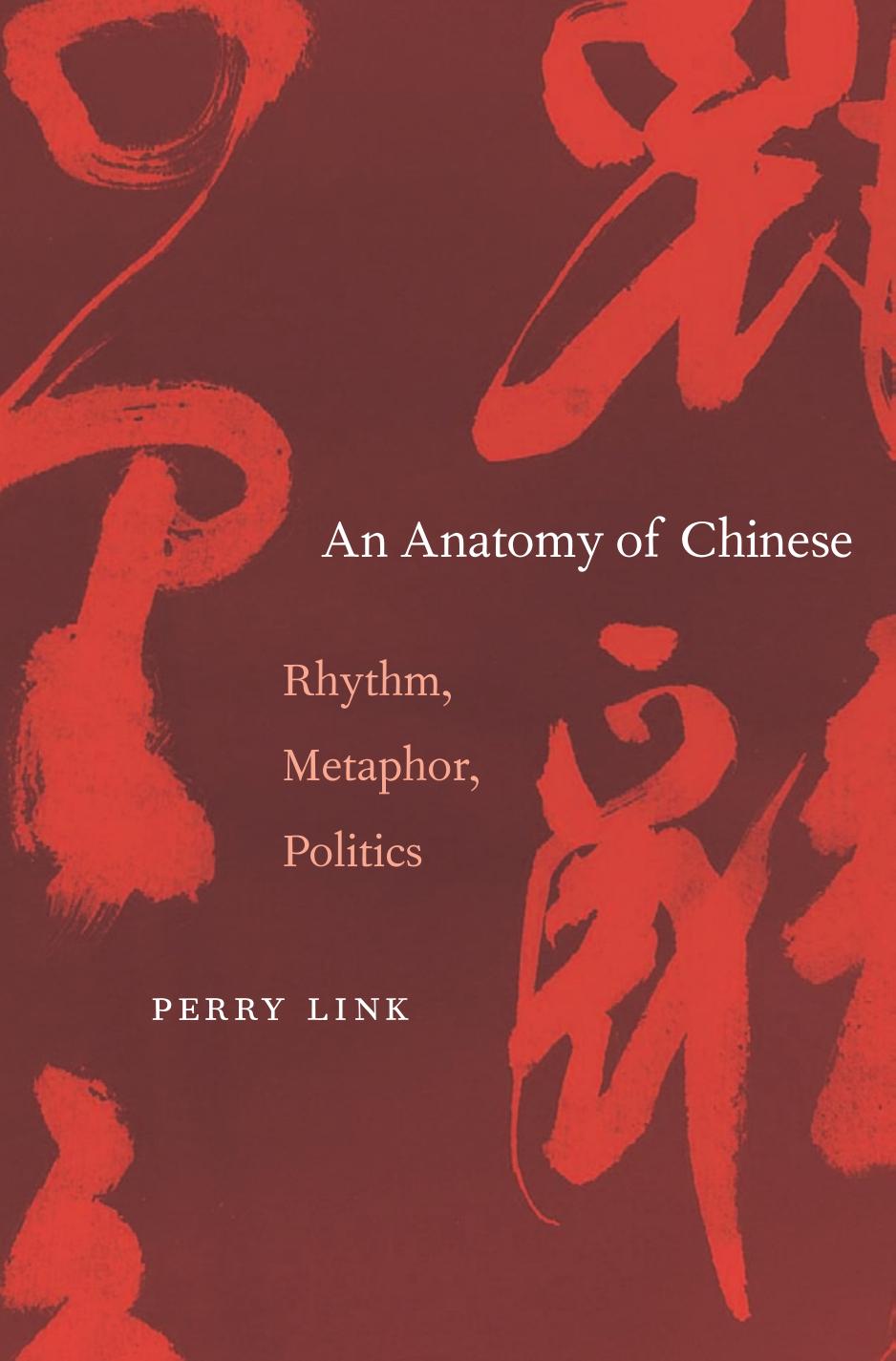An Anatomy of Chinese by Perry Link

Author:Perry Link [Link, Perry]
Language: eng
Format: epub, pdf
Publisher: Harvard University Press
Published: 2013-02-14T16:00:00+00:00
Metaphors in Chinese That Diverge from English in Significant Ways
Lakoff and Johnson make a broad claim that “the most fundamental values in a culture will be coherent with the metaphorical structure of the most fundamental concepts in the culture.”168 They are careful to point out that “be coherent with” does not mean “will always actually exist,” but only that whatever values do exist will be “consistent with” the metaphorical system.169 They suggest—but only occasionally illustrate—that different cultures observe metaphorical patterns that reflect different values.
In his book Metaphor, Culture, and Worldview, Dilin Liu takes up this question for the cases of modern Chinese and American English. Liu identifies a few of what he calls “dominant metaphors” in the two languages. By “dominant” he means, in part, common, but also apparently something like what Lakoff and Johnson mean by “conceptual” or “structural” metaphor in the sense of metaphor that not only reflects the ways we conceive things but actually shapes conceptions as well. Liu argues that dominant metaphors are different in modern Chinese and American English, and that we therefore can probably infer that some of the values and priorities of people who use the two languages diverge along similar lines.
For example, Liu points out that when Americans are unconvinced of an argument they might say “I don’t buy that,” whereas in Chinese, in a similar situation, one might say wo bu chi ni nei yi tao 我不吃你那一套 ‘I don’t eat that stuff of yours’.170 He lists many other examples where marketing metaphors are used in American English and eating metaphors in Chinese. Unfortunately, he does not do actual counts of metaphor frequency in texts or oral recordings, and gives only anecdotal evidence for his claim that the thinking and values of the two cultures correspond to their metaphor preferences. Still, his broad claims do seem plausible. In addition to the marketing and eating examples, he lists sports (e.g., “the ball is in your court”) and the driving of vehicles (e.g., “my wheels are spinning”) as especially fertile sources of metaphor in American English and, for modern Chinese, family relations (e.g., disidai ‘fourth generation [of leaders]’) and stage performance (e.g., chang gaodiao ‘sing high-sounding words’) as especially common.
It is intuitively obvious that metaphorical uses of chi ‘eat’ in Chinese far exceed, both in frequency and in range of applicability, uses of “eat” (or “ate,” “eaten,” etc.) in English. Very broadly speaking, the person who metaphorically “eats” something in Chinese can either gain by the eating or suffer from it. On the gain side, there is chi yige zir 吃一個子儿 ‘eat a piece’, for capturing a piece on a chessboard, or chidiao dijun 吃掉敌军 ‘eat up the enemy army’ for annihilating enemy troops. To enjoy popularity is chi xiang 吃香 ‘eat fragrance’, and to receive a kickback is chi huikou 吃回扣, literally ‘eat return discount’. Chi taiping fan 吃太平饭 ‘eat great-peace food’ means passing one’s days in comfort. Chi doufu 吃豆腐 ‘eat bean curd’ is a subtler example but also illustrates the principle
Download
This site does not store any files on its server. We only index and link to content provided by other sites. Please contact the content providers to delete copyright contents if any and email us, we'll remove relevant links or contents immediately.
Cecilia; Or, Memoirs of an Heiress — Volume 1 by Fanny Burney(32436)
Cecilia; Or, Memoirs of an Heiress — Volume 2 by Fanny Burney(31872)
Cecilia; Or, Memoirs of an Heiress — Volume 3 by Fanny Burney(31857)
The Lost Art of Listening by Michael P. Nichols(7409)
Asking the Right Questions: A Guide to Critical Thinking by M. Neil Browne & Stuart M. Keeley(5649)
We Need to Talk by Celeste Headlee(5545)
On Writing A Memoir of the Craft by Stephen King(4863)
Dialogue by Robert McKee(4323)
Pre-Suasion: A Revolutionary Way to Influence and Persuade by Robert Cialdini(4151)
I Have Something to Say: Mastering the Art of Public Speaking in an Age of Disconnection by John Bowe(3842)
Elements of Style 2017 by Richard De A'Morelli(3307)
The Book of Human Emotions by Tiffany Watt Smith(3238)
Fluent Forever: How to Learn Any Language Fast and Never Forget It by Gabriel Wyner(3031)
Name Book, The: Over 10,000 Names--Their Meanings, Origins, and Spiritual Significance by Astoria Dorothy(2940)
Good Humor, Bad Taste: A Sociology of the Joke by Kuipers Giselinde(2904)
Why I Write by George Orwell(2877)
The Art Of Deception by Kevin Mitnick(2736)
The Grammaring Guide to English Grammar with Exercises by Péter Simon(2711)
Ancient Worlds by Michael Scott(2627)
